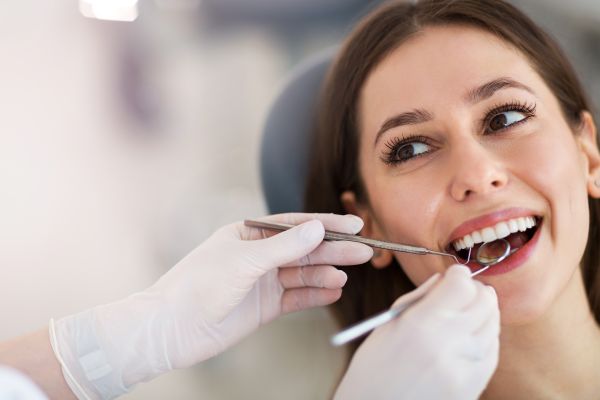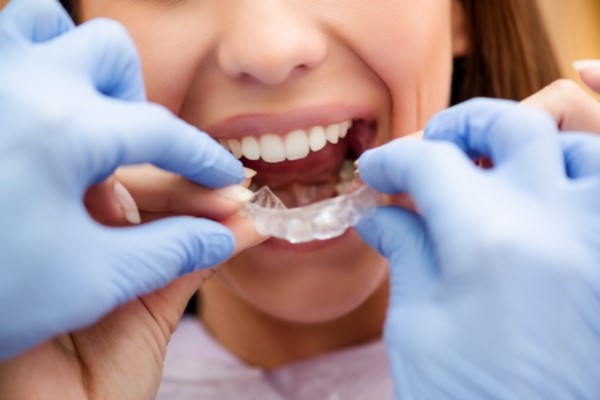Why Does a Dentist in Atlantis Recommend a Bridge?

When a dentist in Atlantis recommends a dental bridge, the patient may wonder what such a treatment entails. A dental bridge is precisely what it sounds like: a device that bridges the gap between one or more missing teeth. This common dental device is comprised of two or more crowns on the teeth on either side of the gap (otherwise known as "abutment teeth") and one or more false teeth between them. The false teeth, or "pontics," can be made of alloys, gold, porcelain or a mixture of all three. Bridges need at least two healthy teeth or secured implants for support.
Reasons a dentist may recommend a dental bridge
The main reason a dentist may recommend a dental bridge is to restore the smile of a person who is missing one or more teeth. A bridge can drastically improve the appearance of one's smile but, more importantly, it can improve function. With two strong abutments in place and a set of faux teeth spanning the space of a gap, a patient can experience improved comfort while eating, talking and laughing. A bridge can also distribute the forces of a bite properly, which is impossible when there are gaps in the gumline.
Moreover, a bridge can preserve the integrity of the remaining teeth and jaw structure. When a person is missing teeth, the jawbone begins to deteriorate, which leads to shifting teeth and more tooth loss.
Types of dental bridges
There are three main types of bridges that a dentist in Atlantis may use: a traditional, or "fixed," bridge, a cantilever bridge and a Maryland, or "bonded," bridge. Each type has its merits, and a dentist makes the appropriate recommendation based on the patient's circumstances.
Traditional "fixed" bridge
With a traditional bridge, the dentist shaves down the anchor teeth and fits a crown over each of them. A pontic of faux teeth connects the two caps. This is the most common type of dental bridge and the sturdiest. Because the caps are somewhat permanent, the bridge itself is enduring. For a dentist to use this method of restoration, the patient's abutment teeth must be strong enough to withstand the additional bite pressure of the missing teeth.
Cantilever bridge
A dentist may use a cantilever bridge when there are adjacent teeth on only one side of a gap or missing tooth. Most dentists will not use this type of appliance unless it is absolutely necessary, and one can't be placed at the back of the mouth, where additional bite pressure can damage or break the remaining molars.
Maryland "bonded" bridge
With a bonded bridge, a dentist uses porcelain or metal "wings" to affix the bridge to the inner edges of the abutment teeth. This method does not require the dentist to shave down the adjacent teeth, thereby making it a preferable option for those concerned about tooth integrity. However, bonded bridges are not as durable as fixed bridges and require much more upkeep and maintenance.
Conclusion
Bridges are a great dental tool for restoring the appearance of a broken or damaged smile. Talk to your dentist in Atlantis about this restoration option.
Request an appointment here: https://www.atlantisdentist.com or call Atlantis Dental Care P.A. at (561) 965-9988 for an appointment in our Atlantis office.
Check out what others are saying about our services on Yelp: Read our Yelp reviews.
Recent Posts
Invisalign® aligners are a type of appliance used in orthodontics. These transparent mouth trays are used to push your teeth towards a better alignment. That is the same principle that powers other devices used in orthodontics, like conventional braces. Gradually pushing on teeth leads to them slowly moving in the direction they are being pushed.…
Invisalign aligners are a popular form of orthodontics nowadays. Many patients prefer the discreet nature of these clear aligners over the conspicuous appearance of conventional metal braces. When braces were the only way to straighten teeth, adults and teenagers often avoided getting teeth straightening treatment so they would not have to deal with the look…
A dental filling can be used to repair cavities that form on teeth due to tooth decay. Fillings can also be used to rebuild teeth structures that have been compromised by tooth decay or to repair broken and worn-down teeth.Tooth decay is the result of oral bacteria feasting on food particles that are stuck on…
You may be wondering if an implant supported bridge or a traditional one is right for you. It is a good idea to know a few pros and cons of each one. For example, implants might last longer for you. Keep reading to find out more about getting an implant supported bridge.Bridges can cover gaps…


